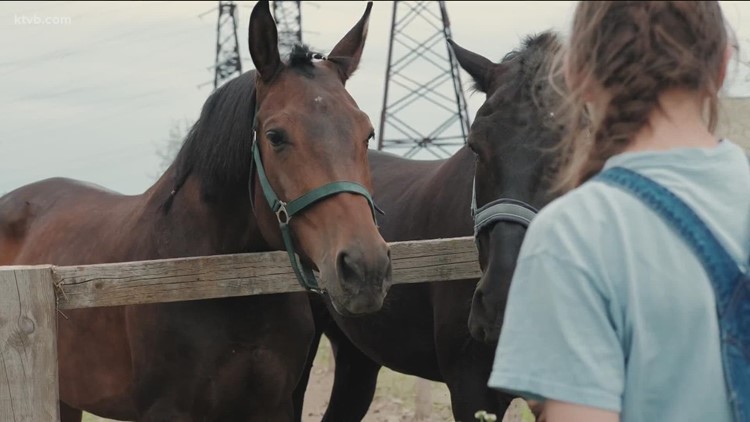GEM COUNTY, Idaho — The Idaho State Department of Agriculture announced Tuesday that it has received confirmation of a case of equine herpesvirus in Gem County, in a mare that recently aborted a pregnancy in late February at a private facility.
The ISDA on Monday, Feb. 27, received laboratory confirmation that the mare's abortion was caused by equine herpesvirus (EHV-1) infection. The department said in a news release that several other mares at the facility had, in recent weeks, either gave birth to weak foals or experienced an unexpected loss of pregnancy, but no diagnosis was confirmed.
All horses on the property are current on all recommended vaccinations, the ISDA said. None have demonstrated any breathing problems or neurological symptoms and have not traveled in the last six months.
The ISDA urges horse owners to incorporate preventative biosecurity measures while transporting or boarding horses at facilities with regular traffic.
Such measures, important in minimizing a horse's risk of contracting EHV-1, include the following:
- Disinfect stalls before use.
- Never share water or feed buckets and tack or grooming equipment.
- Avoid unnecessary contact with other horses.
- People who work at multiple horse facilities are advised to wash hands and change footwear and clothing before entering each facility.
The measures are "especially important where horses are likely to come into contact with new horses such as at rodeos or fairgrounds," the ISDA said in its news release.
Right now, the ISDA said, the decision to cancel or proceed with upcoming horse events and competitions remains with event coordinators at each host facility.
EHV-1 is one of nine known equine herpesvirus strains in the world. EHV-1, EHV-3 and EHV-4 pose the highest disease risk in the U.S. horse population, according to the U.S. Department of Agriculture. EHV-3, which was not found in the Gem County mare, is spread through sexual transmission or contaminated equipment used for breeding.
EHV-1 and EHV-4 can cause upper respiratory disease, neurological disease, abortions, and/or neonatal death in horses. Those viruses can spread through nose-to-nose contact, contaminated equipment, and respiratory secretions. Aborted horse fetuses and afterbirth can also contain the virus. The USDA says on its website that the virus incubation period is "highly variable" and can be as long as two weeks.
Clinical signs of EHV-1 in horses include fever, difficulty urinating, nasal discharge and cough, depression, head tilt, loss of tail tone, stumbling or weakness in the limbs, and the horse being down and unable to rise. The USDA said clinical signs may be non-specific and some horses may be non-clinical.
Horse owners or caretakers who suspect infection are advised to call a veterinarian; isolate affected horses from healthy horses; clean and disinfect all water and feed buckets, mucking equipment, tack and any other equipment that may have come into close contact with the affected horse; and it is strongly recommended that each new horse introduced to the property be housed well away from other horses for a minimum of 30 days, during which time the horse can be monitored for signs of the disease.
The ISDA welcomes any questions or concerns -- call the office at 208-332-8500 or email info@isda.idaho.gov.
Watch more Local News:
See the latest news from around the Treasure Valley and the Gem State in our YouTube playlist:



